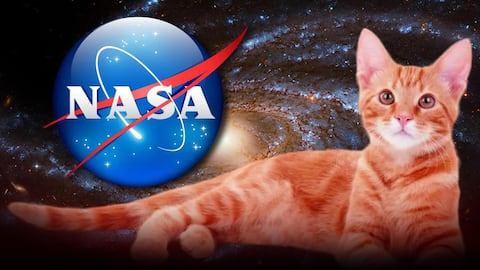NASA streams cat video from deep space using laser communications
What's the story
NASA's Psyche mission recently achieved a groundbreaking feat by transmitting a video of an orange cat named Taters from nearly 19 million miles away using laser communications technology. This marks the first time NASA has streamed a video from deep space using lasers. The Deep Space Optical Communications (DSOC) experiment aims to showcase the potential of high-speed data transmission for future space exploration missions.
Video
How was the video transmitted?
The 15-second ultra-high definition video, encoded in a near-infrared laser, was beamed from the Psyche spacecraft to the Hale Telescope at the California Institute of Technology's Palomar Observatory. The video was received on December 11, and each frame was streamed live at NASA's Jet Propulsion Laboratory in Pasadena, California. At the time, the spacecraft was 80 times farther from Earth than the Moon, and it took only 101 seconds for the laser to reach our planet!
Advantages
Understanding the role and advantages of laser communications
Laser communications can transmit data at speeds 10 to 100 times faster than traditional radio wave systems used by NASA on other missions. NASA Deputy Administrator Pam Melroy said, "This accomplishment underscores our commitment to advancing optical communications as a key element to meeting our future data transmission needs." She added that increasing bandwidth is essential for achieving future exploration and science goals.
Mission
The Psyche Mission and DSOC experiment
Launched in mid-October, the Psyche mission is on its way to explore a metal asteroid between Mars and Jupiter. The spacecraft will travel about 2.2 billion miles over six years to reach its destination in the outer part of the main asteroid belt. The DSOC experiment will demonstrate its ability to transmit broadband video across millions of miles during the first two years of the journey.
Previous broadcasts
Taters and the history of broadcast milestones
A statuette of Felix the Cat was used in television test broadcasts beginning in 1928, so the decision to use a cat video to commemorate DSOC's milestone pays homage to broadcast history. The video also features a graphics overlay showing Psyche's orbital path, the Palomar telescope dome, and details about Taters. Ryan Rogalin, DSOC receiver electronics lead at JPL, said, "Despite transmitting from millions of miles away, it was able to send the video faster than most broadband internet connections."
